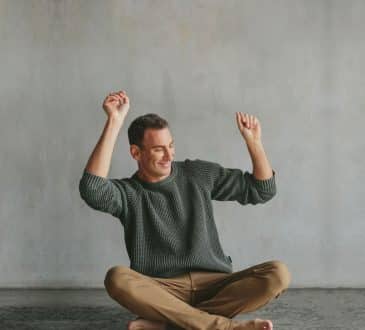Challenging the Status Quo with Creativity: Reimagining the Art of Pleasing Leadership

In the corporate landscape, the mantra “Make your boss look good, and you’ll succeed” echoes through the hallways like a hymn of career wisdom.
But nothing can be further from the truth.
When we use creativity at work and embrace the principals of innovation to get ahead, the benchmark of success becomes quality work itself. Moving away from pleasing leadership and making your boss look good is a true path to injecting creativity and innovation into everything that you do. In this exploration, we’ll delve into the nuances of creativity and innovation as a practice, dissecting why blindly making your boss look good and pleasing leadership might not always be the best strategic approach for both personal and professional growth.
When we practice creativity at work, it introduces a transformative perspective on business. Unlike traditional models that rely on conformity and hierarchy, the Creator Mindset is about embracing authenticity, fostering innovation, and recognizing the individual’s power to contribute meaningfully to the collective success of a company.
Creativity and innovation have never been more important in corporate life today. Here are three powerful tools you can use now to challenge the status quo away from pleasing the boss and into a creative and innovative future.
- Authenticity as the Cornerstone
At the heart of the Creator Mindset is authenticity – the idea that success stems from embracing one’s true self rather than conforming to societal or organizational expectation. That pursuit of authenticity is not just a personal journey; it is also a powerful catalyst for organizational success. Making your boss look good or pleasing leadership just for the sake of pleasing leadership may compromise authenticity, creating a veneer that obscures the true capabilities and potential of your work. We need the power of authenticity in fueling creative endeavors. Authenticity empowers us to bring our true selves to the creative table, fostering an environment where diverse perspectives are not only valued but actively sought after. The way that you conduct your role at work is a highly valued asset – and in it lies an amazing power of creativity. This authenticity-driven approach becomes a breeding ground for fresh ideas, unique insights, and unconventional solutions that can propel a job beyond the confines of the ordinary. Creativity thrives in an atmosphere of trust and openness, both of which are nurtured by authenticity. When individuals feel free to express their genuine thoughts, concerns, and visions, a culture of honest collaboration emerges. This transparency cultivates a shared understanding, enabling team members to align their creative energies toward a common goal. When we view our work with creativity, the notion of authenticity isn’t just about being true to oneself; it’s about creating an environment where every authentic voice contributes to a harmonious symphony of innovation. Authenticity becomes a guiding force that dismantles the barriers to creativity erected by fear of judgment or the need for conformity. Conformity causes us to make leadership look good or impress the boss when that’s literally the last thing we need to do. Creativity in your work, on the other hand, encourages us to discard the mask of conformity and embrace unique perspectives. When authenticity takes center stage, individuals are liberated from the constraints of preconceived notions, allowing for the exploration of unconventional ideas and the pursuit of creative breakthroughs. When we use authenticity, the bridge connecting the individual with their creative potential is rife. When we authentically engage with our work, we tap into a wellspring of passion and enthusiasm. This genuine connection with one’s creative endeavors transcends the routine, transforming the act of work into a meaningful expression of one’s true and full capabilities. And there is no better place to be. Authenticity thus becomes the driving force that propels individuals towards not only creative excellence but also a profound sense of fulfillment in our professional journey. This road leads to joy, the road to pleasing others and leadership leads to burnout. Authenticity is not just an buzzword; it is the very essence that breathes life into the innovative spirit of us all. By embracing authenticity, we can unlock a reservoir of creative potential, foster a culture of open collaboration, and chart a course towards a future where every individual contributes authentically to the collective brilliance of the team. - How to Deal with Organizational Resistance
Now that you are using authenticity as the cornerstone of a creative and innovative career, you are bound to hit some resistance. So what can you do? Adopting a creative view may lead to resistance within organizations because they are often too deeply entrenched in traditional hierarchies and power structures. Sound familiar? Convincing leaders and colleagues to embrace creativity and innovation needs to be a gradual process that requires persistence, effective communication, and tangible examples of success.Organizational resistance, when viewed through the lens creativity, is a formidable but not impossible challenge that demands a gradual, thoughtful approach. We need to advocate for a transformative shift in organizational paradigms, emphasizing authenticity, innovation, and individual contribution. However, the adoption of this mindset is often met with resistance within entrenched structures, making it imperative for creative change to be a gradual process.
Interestingly, organizational resistance in and of itself is not as a roadblock but is an opportunity for transformation. Resistance often stems from deep-seated old habits, fear of the unknown, and attachment to traditional ways of operating. To overcome these obstacles, we must introduce creative change incrementally, allowing individuals within the organization to acclimate slowly to the new mindset gradually. The key here is slowly but surely.
Persistence is another key component in navigating organizational resistance. We must persevere in our efforts to instill the creative and innovative approach. This not about trying creativity and innovation once and then declaring that it is not working and abandoning the approach. This race is indeed not for the swift but for those who endure. So, this persistence involves consistently communicating the benefits of the new paradigm, addressing concerns, doing a lot of listening and using empathy, and finally uncovering the positive impact on both individual and company success. The gradual nature of this process ensures that we have the time and space to comprehend, internalize, and ultimately embrace the transformative principles of a Creator Mindset.
Effective communication plays a pivotal role in dismantling resistance and fostering understanding. Communication is such a basic construct that its power is often ignored, but it is still vital. We need to recognize the importance of clear, transparent communication that articulates the rationale behind the shift in mindset. And that is a very important point. Because by providing a compelling narrative and illustrating how a creativity and innovation mindset aligns with goals, we can and will build a compelling case for change. This will not happen overnight. But soon tangible examples of success become powerful tools in this communication strategy, offering concrete evidence of how creativity and innovation has positively influenced the organization.
Tangible examples of success act as beacons of inspiration within the organization. Like lights that guide a ship to dock at night, these beacons become a source of tangible and repeatable success. Showcasing these real-world instances where creative and innovative initiatives have led to improved overall success helps demystify the concept for those resistant to change. These examples serve as living proof that the gradual adoption of a new way to look at things can yield tangible, positive outcomes. Celebrating these successes reinforces the benefits of the new mindset and encourages others to embrace the transformative journey.
- Shifting Mindsets
Shifting mindsets away from the traditional approach of making the boss look good and pleasing leadership towards a Creator Mindset is a crucial step in fostering a more dynamic and innovative workplace. The importance of shifting mindsets is underscored by the recognition that success is not solely defined by outward appearances. The traditional approach of making the boss look good can lead to a culture of conformity, stifling creativity and hindering the ability to adapt to change. Shifting mindsets recognizes that true innovation often arises from the freedom to explore unconventional ideas and challenge the status quo. By moving away from the focus on pleasing leadership and making the boss look good, we can break the chains of convention and engage in creative problem-solving to contribute to goals in ways that never existed before. This transformation in mindset entails a reevaluation of success metrics. Creativity and innovation urges us to break free from the narrow confines of traditional success criteria. Instead of focusing solely on external validation, success is redefined as a multifaceted concept that includes individual growth, innovative contributions, and the overall well-being of the team. Success can no longer be defined as a one-dimensional pursuit driven by superficial appearances or antiquated measurement tools. It becomes a collective endeavor where the emphasis shifts from conforming to predetermined standards to fostering a culture that values innovation and celebrates diverse strengths. By reevaluating success metrics, auditors create an environment where metrics become far more useful and relevant to company strategies. The reevaluation of success metrics also implies a departure from the traditional hierarchical structures that often emphasize top-down recognition. Armed with creativity and innovation, our success is democratized, allowing for a more inclusive and dynamic evaluation process. This shift in perspective creates a vision of a workplace where success is measured by the depth of creativity, the authenticity of contributions, usefulness of tasks (not just an work for work’s sake) and the overall positive impact on true growth and adaptability. Shifting our mindset away from just making the boss look good towards a practice of creativity and innovation produces work that values authenticity, embraces diversity of thought, and prioritizes innovation and creativity. This shift is not just a change in mindset but a transformation in the very fabric of organizational dynamics, promoting a more dynamic, inclusive, and sustainable approach to real success measurements. We can unleash our creative potential and thrive in the ever-evolving landscape of the professional world simply by shifting our mindset.
In the dynamic landscape of our modern workplace, practicing and embracing creativity emerge as a beacon of authenticity, innovation, and disruptive success. While the traditional strategy of making your boss look good appears superficially to have merits, it often perpetuates a cycle of conformity which is not good for long term success.
When we infuse our work with creativity, weaving the threads of innovation into the fabric of our everyday endeavors, the measure of success becomes synonymous with individual joy and meaningful contribution. Creativity and innovation are a discipline – practicable and accessible to every human being on earth. But actually taking the leap on an opportunity to practice our careers – no matter what it is that we do — with creativity and innovation can lead to fostering both personal and professional growth, bringing a sense of complete joy and meaning to our everyday work.
Written by Nir Bashan.
Have you read?
Dirty Driving: These Are The Most Polluting Cars.
The 10 Female CEOs in FTSE 100 companies in the United Kingdom, 2023.
The 4 Most Influential Female CEOs In The Telecom Industry, 2023.
The 50 Richest People in the Philippines, 2023 List.
The World’s Richest Self-Made Women, 2023.
These Are the most overpaid CEOs among S&P 500 companies, 2023.
Bring the best of the CEOWORLD magazine's global journalism to audiences in the United States and around the world. - Add CEOWORLD magazine to your Google News feed.
Follow CEOWORLD magazine headlines on: Google News, LinkedIn, Twitter, and Facebook.
Copyright 2025 The CEOWORLD magazine. All rights reserved. This material (and any extract from it) must not be copied, redistributed or placed on any website, without CEOWORLD magazine' prior written consent. For media queries, please contact: info@ceoworld.biz








